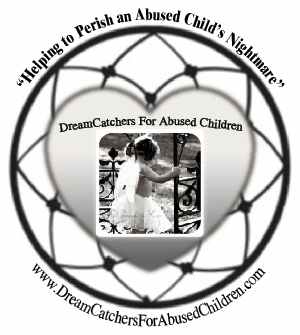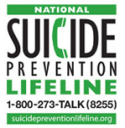 Whether it is psychological, emotional or sexual, being a victim of abuse can leave emotional and mental wounds that are much more difficult to heal than cuts and bruises. Survivors of childhood abuse may often find it immensely difficult to cope with the damage to their own mental health and the intense, negative thoughts and feelings that plague them for a long time after the actual abuse has ended. Going through abuse in childhood can lead to mental health issues in adulthood, which can hinder an individual’s ability to find peace and happiness in their life.
Whether it is psychological, emotional or sexual, being a victim of abuse can leave emotional and mental wounds that are much more difficult to heal than cuts and bruises. Survivors of childhood abuse may often find it immensely difficult to cope with the damage to their own mental health and the intense, negative thoughts and feelings that plague them for a long time after the actual abuse has ended. Going through abuse in childhood can lead to mental health issues in adulthood, which can hinder an individual’s ability to find peace and happiness in their life.
Mental health issues such as anxiety and depression, suicidal thoughts, trust issues, and distressing memories are all common problems dealt with by individuals who have survived childhood abuse and trauma. Therapy can help abuse survivors find an outlet for these negative feelings and learn new, healthier ways to combat them and improve their life and wellbeing. Creative therapies have become more and more common in recent years; here are just some of the reasons why they can be so effective.
Reason #1. An Outlet for Negative Feelings:
Often, abuse survivors find it very difficult to put their feelings, experiences and thoughts into words. Many have been conditioned not to speak about the abuse and will find it difficult to finally open up and bare all about what has happened to them. This is especially true for younger children or those who have only just begun to seek help. Creative therapies such as art therapy provide an outlet for these thoughts and feelings without requiring the patient to communicate verbally; for example, they can draw pictures to represent their feelings and emotions.
Reason #2. Provides a Distraction:
Another reason why creative therapies have become so popular amongst survivors of abuse is that they provide a welcome distraction from negative feelings and thoughts. Whether taking part in a group or as an individual, many creative therapies allow the patient to totally immerse themselves in what they are doing and focus on letting their creative juices flow, which in turn can help them to think more positively towards themselves and aid with recovery from associated mental health problems such as depression. Simple tasks such as working to create a card or paint a picture can give the patient something positive to focus on and work towards.
Reason #3. Deal with Repressed Memories:
It is not uncommon for survivors of childhood abuse to have a range of repressed memories that can become very difficult to deal with. The unique thing about creative therapies, such as art therapy, is that it gives the patient better access to their subconscious. Creativity is largely controlled by the right hemisphere of the brain, which is also where memories are stored. Because of this, art can help survivors come to terms with their experiences and face repressed memories to deal with them with the help of a trained medical professional such as a counsellor.
Even after the abuse has ended, the ramifications for mental health can be devastating for the survivor. Creative therapies provide an outlet for the negative feelings and increase the chance of dealing with repressed memories and thoughts that are getting in the way of a full recovery.
 WANTED IN TRI-CITIES, WASHINGTON
WANTED IN TRI-CITIES, WASHINGTON 











 PENNSYLVANIA — Police have found the body a young female believed to be a 13-year-old girl abducted Tuesday, authorities said Thursday night. An Ashtabula man suspected of kidnapping Kara Zdanczewski of Ashtabula was nabbed Thursday afternoon by police in Sharon, Pa., authorities said. The suspect did not bring Kara back home after an outing, police said. The Pennsylvania State Police Major Crimes Unit identified the man as 46-year-old John R. Bove, of Ashtabula. Initial reports, however, identified the man as from Pennsylvania. Bove is a registered sex offender in the state of Ohio, according to the Ohio Attorney General’s database. He was convicted of rape in 1990 in New York.
PENNSYLVANIA — Police have found the body a young female believed to be a 13-year-old girl abducted Tuesday, authorities said Thursday night. An Ashtabula man suspected of kidnapping Kara Zdanczewski of Ashtabula was nabbed Thursday afternoon by police in Sharon, Pa., authorities said. The suspect did not bring Kara back home after an outing, police said. The Pennsylvania State Police Major Crimes Unit identified the man as 46-year-old John R. Bove, of Ashtabula. Initial reports, however, identified the man as from Pennsylvania. Bove is a registered sex offender in the state of Ohio, according to the Ohio Attorney General’s database. He was convicted of rape in 1990 in New York.  SOUTH CAROLINA – When the University of South Carolina became NCAA women’s basketball champions early last month, longtime referee Wesley Dean was spending his 57th day in Cobb County jail on child molestation charges. Weeks later, a Cobb grand jury indicted him on two molestation charges and a count of enticing a child for indecent exposure, court records show. As of Thursday afternoon, Dean remained in jail without bond.
SOUTH CAROLINA – When the University of South Carolina became NCAA women’s basketball champions early last month, longtime referee Wesley Dean was spending his 57th day in Cobb County jail on child molestation charges. Weeks later, a Cobb grand jury indicted him on two molestation charges and a count of enticing a child for indecent exposure, court records show. As of Thursday afternoon, Dean remained in jail without bond.  Twenty six men and two women appeared before a judge at Leeds Crown Court charged with offences including rape, trafficking, sexual activity with a child, child neglect, child abduction, supplying drugs and making of indecent images of children. The 29th defendant, who is in custody, did not appear for the hearing on Thursday. The defendants were greeted by protesters outside the court building, where a number of police were on duty. The allegations are non-recent sexual offences, dating back to between 2004 and 2011, and relate to 18 women, who were children at the time. The youngest child involved was 11 years old.
Twenty six men and two women appeared before a judge at Leeds Crown Court charged with offences including rape, trafficking, sexual activity with a child, child neglect, child abduction, supplying drugs and making of indecent images of children. The 29th defendant, who is in custody, did not appear for the hearing on Thursday. The defendants were greeted by protesters outside the court building, where a number of police were on duty. The allegations are non-recent sexual offences, dating back to between 2004 and 2011, and relate to 18 women, who were children at the time. The youngest child involved was 11 years old. 
















![Validate my RSS feed [Valid RSS]](http://dreamcatchersforabusedchildren.com/wp-content/uploads/2009/10/valid-rss.png)












